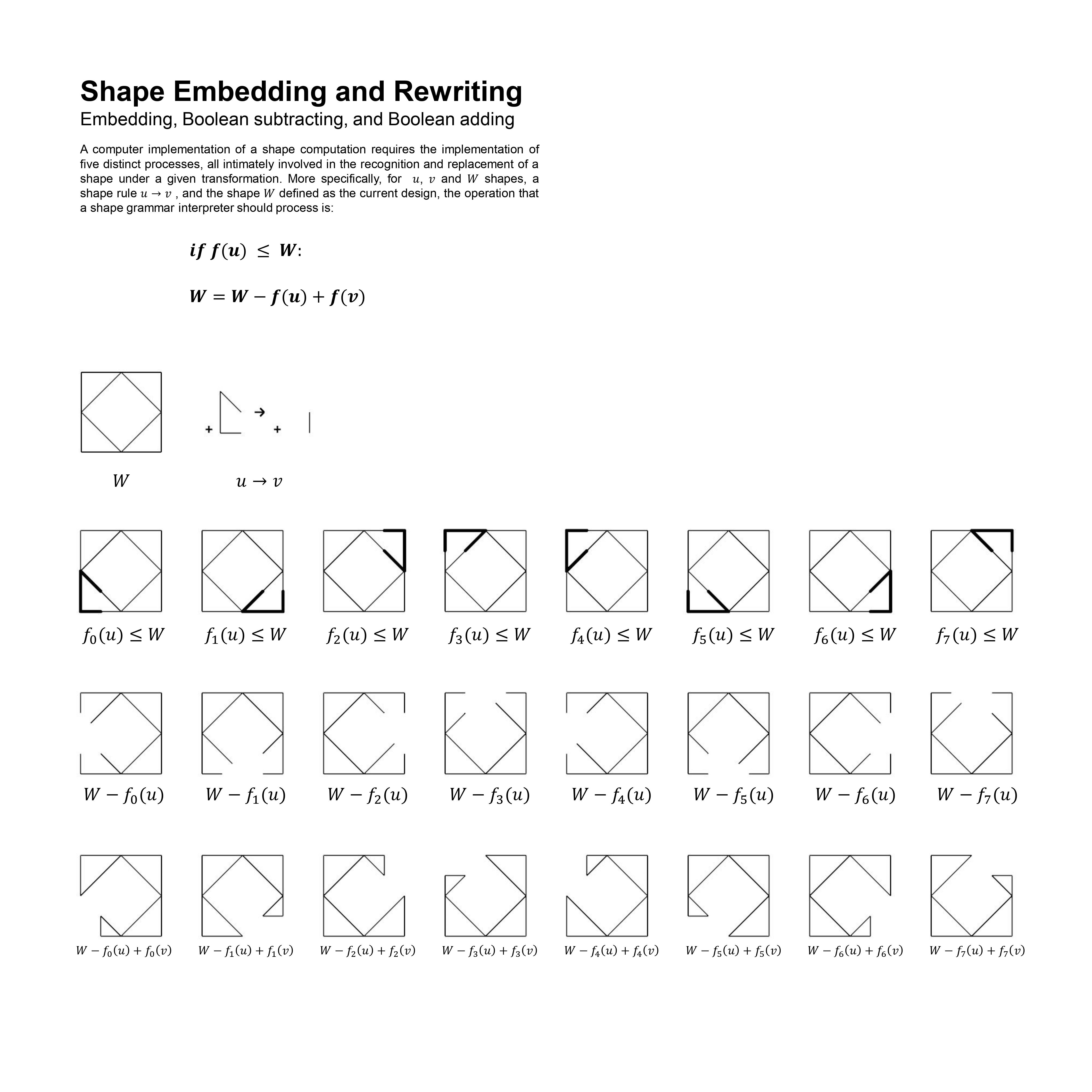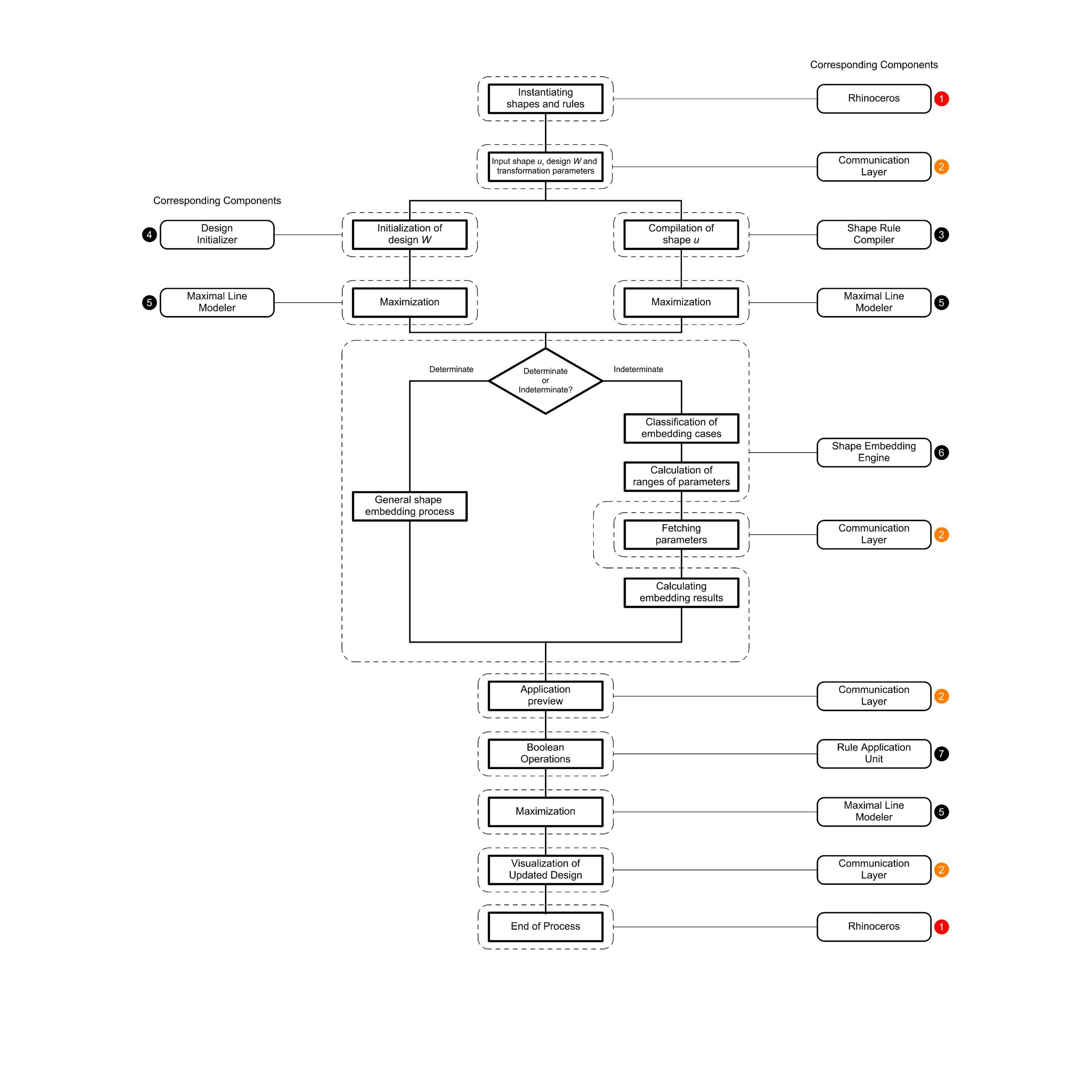Shape Machine
Shape Embedding and Rewriting in Visual Design
Georgia Institute of TechnologyARCC Dissertation Award 2022
“Based on the quality and depth of study on reworking and solving the perennial problem of shape recognition (embedding) in CAD modeling, and the promise to shape the future of computer-aided architectural design (CAAD), the ARCC Board of Directors is pleased to announce the recipient of the 2022 ARCC Dissertation Award is Dr. Tzu-Chieh Kurt Hong.” - ARCC Announcement
Announcement on ARCC website
Dissertation approved by:
Dr. Athanassios Economou
School of Architecture
Georgia Institute of Technology
Dr. Ramesh Krishnamurti
School of Architecture
Carnegie Mellon University
Dr. Dennis Shelden
School of Architecture
Rensselaer Polytechnic Institute
Dr. Kristina Shea
Dep. of Mechanical and Process Eng
ETH Zürich
Dr. Josephine Yu
School of Mathematics
Georgia Institute of Technology
⌘F and
⌘R in Visual Design
Shape grammar interpreters have been studied for more than forty years addressing several areas of design research including architectural, engineering, and product design. At the core of all these implementations, the operation of embedding – the ability of a shape grammar interpreter to search for subshapesa geometry model even if they are not explicitly encoded in the database of the system – resists a general solution. It is suggested here that beyond a seemingly long list of technological hurdles, the implementation of shape embedding, that is, the implementation of the mathematical concept of the “part relation” betweetwo shapes, or equivalently, between two drawings, or between a shape and a design, is the single major obstacle to take on. This research identifies five challenges underlying the implementation of shape embedding and shape grammar interpreters at large: 1) complex entanglement of the calculations required for shape embedding and a shape grammar interpreter at large, with those required by a CAD system for modeling and modifying geometry; 2) accumulated errors caused by the modeling processes of CAD systems; 3) accumulated errors caused by the complex calculations required for the derivation of affine, and mostly, perspectival transformations; 4) limited support for indeterminate shape embedding; 5) low performance of the current shape embedding algorithms for models consisting of a large number of shapes.
Intorduction to Shape Machine (2019, Shape Machine Symposium, Georgia Tech)
Intro Videos on Youtube:
Shape Machine Symposium
Intro to Shape Machine
Shape Machine in CAAD
Shape grammar interpreters have been studied for more than forty years addressing several areas of design research including architectural, engineering, and product design. At the core of all these implementations, the operation of embedding – the ability of a shape grammar interpreter to search for subshapesa geometry model even if they are not explicitly encoded in the database of the system – resists a general solution. It is suggested here that beyond a seemingly long list of technological hurdles, the implementation of shape embedding, that is, the implementation of the mathematical concept of the “part relation” betweetwo shapes, or equivalently, between two drawings, or between a shape and a design, is the single major obstacle to take on. This research identifies five challenges underlying the implementation of shape embedding and shape grammar interpreters at large: 1) complex entanglement of the calculations required for shape embedding and a shape grammar interpreter at large, with those required by a CAD system for modeling and modifying geometry; 2) accumulated errors caused by the modeling processes of CAD systems; 3) accumulated errors caused by the complex calculations required for the derivation of affine, and mostly, perspectival transformations; 4) limited support for indeterminate shape embedding; 5) low performance of the current shape embedding algorithms for models consisting of a large number of shapes.
Intorduction to Shape Machine (2019, Shape Machine Symposium, Georgia Tech)
Intro Videos on Youtube:
Shape Machine Symposium
Intro to Shape Machine
Shape Machine in CAAD













